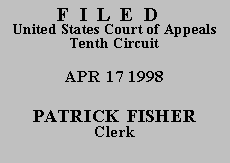

| UNITED STATES OF AMERICA,
Plaintiff-Appellee, v. PAULIASI T. VAINUKU, also known as Paul Toni, Defendant-Appellant. |
|
Defendant Pauliasi T. Vainuku pled guilty to six counts of bank robbery, as principal and aider and abettor, in violation of 18 U.S.C. § 2113(a) and 18 U.S.C. § 2. Based on a criminal history category of IV and an offense level of 25, the district court determined the appropriate sentencing range under the United States Sentencing Guidelines was 84 to 105 months. The court sentenced defendant to 84 months' imprisonment, three years' supervised release, and a special assessment of $600. Defendant appeals his sentence, contending that the district court erred in not grouping the six convictions under U.S.S.G. § 3D1.2, and that his sentence is grossly disproportionate to that imposed on his codefendant for allegedly the same conduct.(1)
Part D of Chapter 3 of the sentencing guidelines provides rules for determining a single offense level covering all counts of which a defendant is convicted. The procedures allow the grouping of closely related counts, see U.S.S.G. § 3D1.1, and § 3D1.2 states that "[a]ll counts involving substantially the
same harm shall be grouped together into a single Group."(2) Defendant contends that all six of his bank robbery convictions should have been combined into one group because they all involved financial institutions and the aggregate amount stolen was more than $10,000 but less than $50,000. We review the district court's interpretation of the sentencing guidelines de novo, see United States v. Janusz, 135 F.3d 1319, 1324 (10th Cir. 1998), and conclude that the court did not err by not grouping the six convictions together. Although § 3D1.2(d) does provide for grouping of counts "[w]hen the offense level is determined largely on the total amount of harm or loss," and the offense level for robbery does consider the amount of loss to some extent, see § 2B3.1(b)(6), robbery is specifically excluded from grouping under § 3D1.2(d). See also § 3D1.2 Application Note 6.
Defendant also contends that the district court erred by not departing downwardly, or failing to explain why it did not do so, to make his sentence more proportionate to that of his cousin and codefendant, Ikale Vainuku, who received a sentence of 41 months. Defendant contends that his conduct and culpability were not so different from Ikale's as to warrant a sentence more than twice as long as Ikale's. "[W]hen a sentence is within a guideline range and is not imposed in violation of law, or as a result of an incorrect application of the guidelines, then the district court's refusal to exercise its discretion to depart downward from the guideline range is not appealable." United States v. Lloyd, 13 F.3d 1450, 1454 (10th Cir. 1994) (quotation omitted) (alteration in original). The district court imposed a sentence at the low end of the guideline range. We do not understand defendant to be contending that the sentence was based on an incorrect application of the law or guidelines, but only that the court should have exercised its discretion to depart downwardly. That issue is not appealable.(3)
AFFIRMED.
Entered for the Court
Senior Circuit Judge
*. This order and judgment is not binding precedent, except under the doctrines of law of the case, res judicata, and collateral estoppel. The court generally disfavors the citation of orders and judgments; nevertheless, an order and judgment may be cited under the terms and conditions of 10th Cir. R. 36.3.
1. In his statement of issues, defendant couches his claims in terms of general constitutional, due process and equal protection violations, but his arguments are based solely on application of the sentencing guidelines. We consider any constitutional arguments waived. See United States v. Hardwell, 80 F.3d 1471, 1492 (10th Cir.) (issue waived when party fails "to make any argument or cite any authority to support his assertion"), reh'g granted in part on other grounds, 88 F.3d 897 (10th Cir. 1996).
2. We use the 1995 edition of the sentencing guidelines, as did the district court.
3. We also note that the disparity in the sentences here is explicable by the facts in the record. See United States v. Garza, 1 F.3d 1098, 1101 (10th Cir. 1993). Defendant pled guilty to six counts of bank robbery, while Ikale pled guilty to only two. Moreover, defendant had a higher criminal history category.